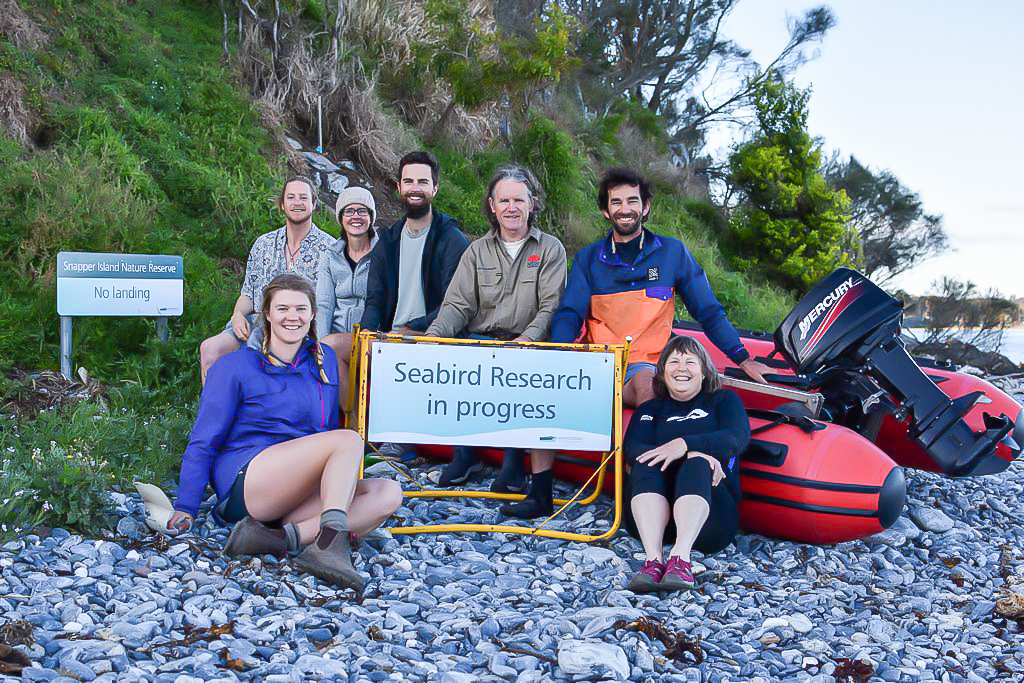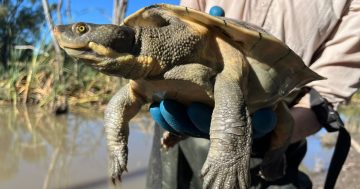
A little penguin is spotted resting in the grass on Snapper Island recently. Photo: Eurobodalla Council.
Researchers have headed to an island off the coast of Batemans Bay to spend their nights nesting among the region’s much-loved penguins to help them better understand the colony.
Eurobodalla Shire Council said more intense monitoring efforts would take place on Snapper Island, which sits just off Batehaven, this spring as part of a new conservation research initiative on little penguins.
Council and the NSW Department of Planning and Environment are working to ensure the colony is better understood and breeding success is maximised.
“We are so lucky to have Snapper Island here in the Bay; all our efforts out there appear to be increasing the breeding success of the island’s little penguins,” council’s invasive species supervisor Paul Martin said.
“This increased monitoring will really help us to understand population trends and how to best tailor habitat restoration efforts to benefit these cute little guys.”
Over the past few years, senior DPE scientist Nicholas Carlile and his team have worked with council to monitor marine debris and restore penguin habitat by removing weeds and replanting native vegetation. They have also added artificial burrows to create more nesting opportunities.
“We will be working at night on the island to enable a full count of the population,” he said of the upcoming research.
“A GPS tracking study to look at the movements of the birds may also be carried out.
“While lighting of the birds at night is not recommended, lights will be seen on the island as researchers move about doing their studies.”

The research team stops for a photo as they begin monitoring little penguins on Snapper Island. Photo: Eurobodalla Council.
The research will also capture the penguins’ movements around available food resources and potential threats to their survival.
Earlier this year, council said the little penguins on Snapper Island appeared to be thriving. The last nesting season had been a good one with many well-fed chicks fledging successfully.
Little penguins are the smallest penguin species in the world and prefer rocks and sand to snow and ice, the Australian Museum says.
They normally build nests in crevices between rocks or burrows in September. Males attract their mates by digging, often reconstructing old nests, and both parents take turns incubating their eggs in one- or two-day shifts.
Mr Martin reminded the public Snapper Island was a no-go zone and they are not allowed to land there, as many burrows are hidden under a dense carpet of knee-high vegetation.
“The penguins can very easily be trodden on and injured or killed,” he said.
“Visitation can also lead to nest abandonment, so it’s super important we keep disturbance to an absolute minimum.”
But volunteers are welcome to join council’s habitat restoration activities that occur outside of the nesting season. If interested, contact Mr Martin on 4474 1000 or [email protected].








